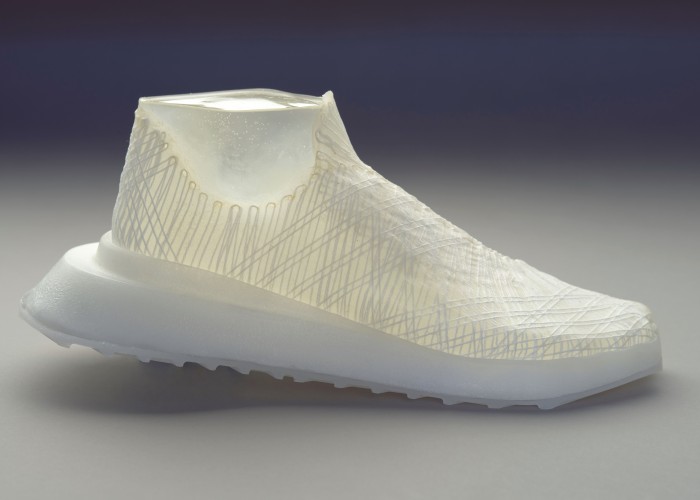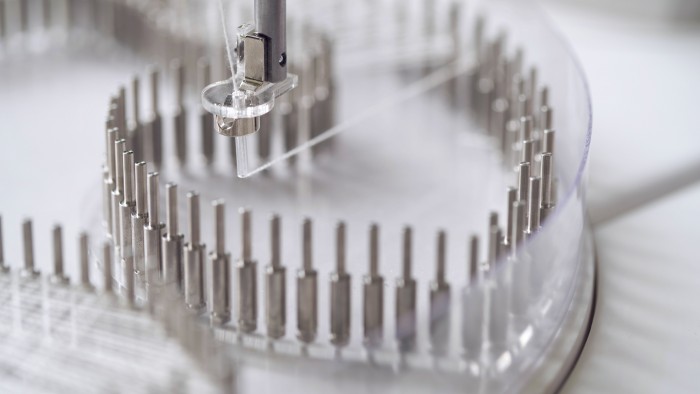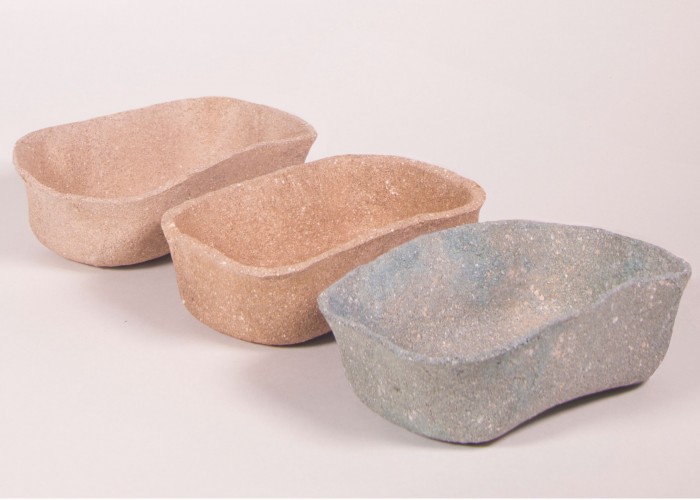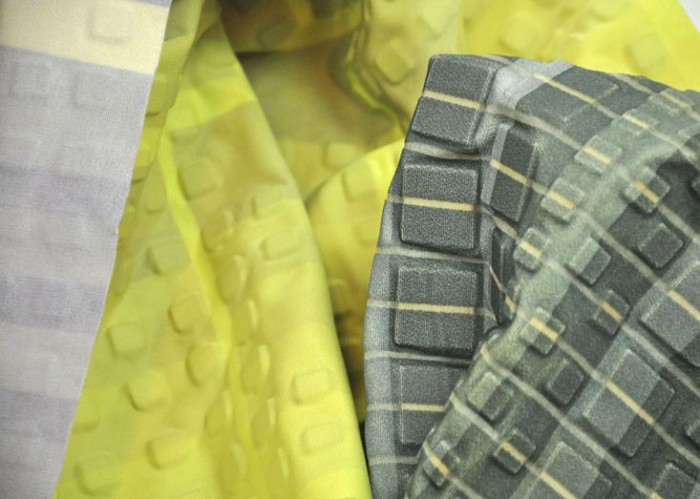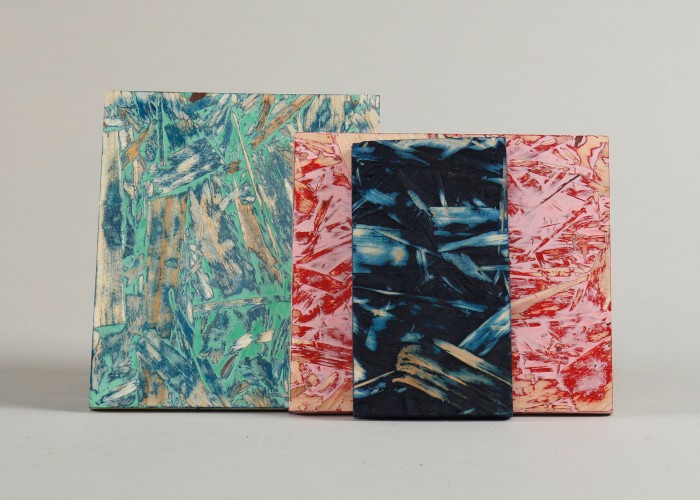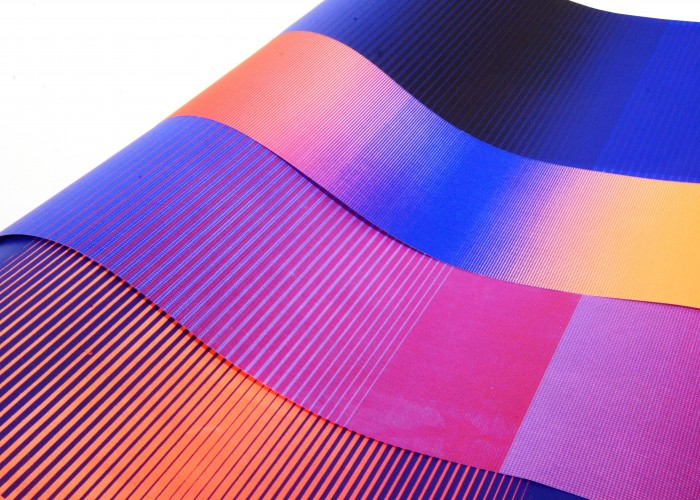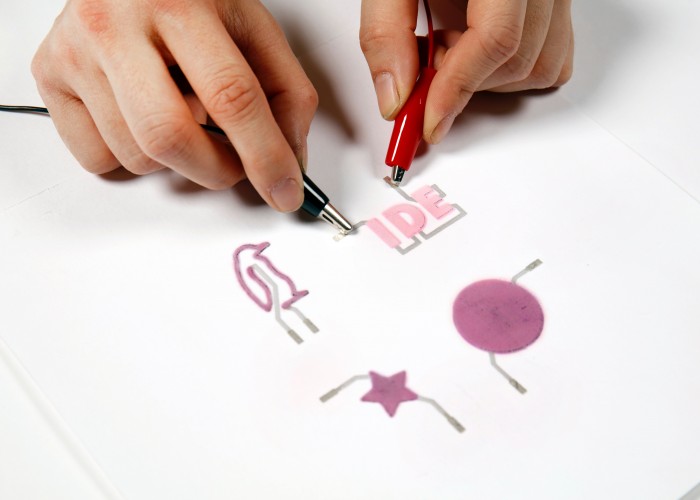Graduate selection 2018 with Jim Biddulph
The summer months are always abuzz with life and creativity, not least because it’s the time of year that final year design graduates showcase the results of years worth of research and creative endeavour.
Responding to the growing concerns surrounding our over-reliance upon petrochemical materials as discussed in our recent Material Documentary, Jen Keane’s project This is grown employs an organism-driven approach to material design.
Merging modern industrial textile practice with future biotech principles she proposes an alternate future, “by manipulating the growing process of k. rhaeticus bacteria, I have developed a new form of ‘microbial weaving’, working with microbes like bacteria and yeast to optimize the natural properties of bacterial cellulose and create a new category of hybrid materials that are strong, lightweight and potentially customizable to a nanoscale.” The result of this ‘Bio-facture’ is a shoe for which she ‘grew’ the upper in a single piece, with no sewing and one continuous yarn held into place by the cellulose produced by the bacteria.
Working with Professor Cedric Delattre, an expert in Marine Biology, Cemal Gokce has created another material innovation that seeks to move us away from plastic consumption. The Earth Project offers 100% biodegradable materials made from seaweed, crustacean shells, Argan oil paste and recycled paper. And the materials are not merely alternatives; being insoluble, durable and exuding anti-bacterial, anti-fungus and anti-microbial properties that extend the shelf-life of food could make them a direct replacement to plastic in the future.
Context and narrative are often what sets apart a collection from the rest and the work of Erin McQuarrie has interesting origins, as well as some innovative surface solutions. Homage to the Studio takes Charles Rennie Mackintosh’s Glasgow School of Art building, where she studied, as its starting point. Responding to the damaged building, post first fire, as well as the impact that Japanese art and design had on Mackintosh’s work, the collection is a marriage between hand craft and digital techniques, considering the juxtaposition of varying materials and processes to create interesting colour harmonies and intriguing tactile qualities inspired by the remnants of the affected architecture.
We highlighted RCA student Orla Lawn’s project Spelk back in January during her interim show and the final collection of interior wood panelling transformed through handcrafted finishing didn’t disappoint. Inspired by the luxurious veneers and marble wall treatments of early 20th century interiors, Orla set out to create a new take on these architectural surfaces. By developing specialist techniques she has been able to elevate common raw building materials to high end products. Soft and smooth to the touch but with a rough and splintered appearance, these surfaces provide a contradictory sensory experience.
Colour in Design Award Winner Diane Bresson from Central Saint Martins has created an impactful and attention grabbing print collection that is created with a beautiful balance of precision and serendipity. Drawing inspiration from combination and dissection puzzles, especially the Tangram, she takes simple geometric shapes and spontaneously and playfully overlays and combines them through screen-printing to create non-repeat patterned wallpapers. Both black and white and full colours versions are available and are accompanied by a colourful animation that explores the inter-dimensional relationship between digital and traditional creation of dynamic patterns.
“Imagine a screenless future, where digital data and online content will be fully integrated into every part of the built environment in a seamless way.” Carolyn Tam has developed a paintable digital display that has the potential to do exactly that. TechniChrome can be easily applied on many surfaces, the benefits of which she explains, “Typically, digital displays require complex manufacturing process. They are pre-designed and come in a fixed size frame which limits where users can show digital information. TechniChrome overcomes this and provides a radically new way to apply digital displays on almost any surface.” A future in which the screens that quite literally frame our lives no longer exist now has a fledgling potential.
Who did you discover at New Designers? Let us know on our Social Media platforms; Facebook, Instagram, Twitter, Linkedin, Google+





